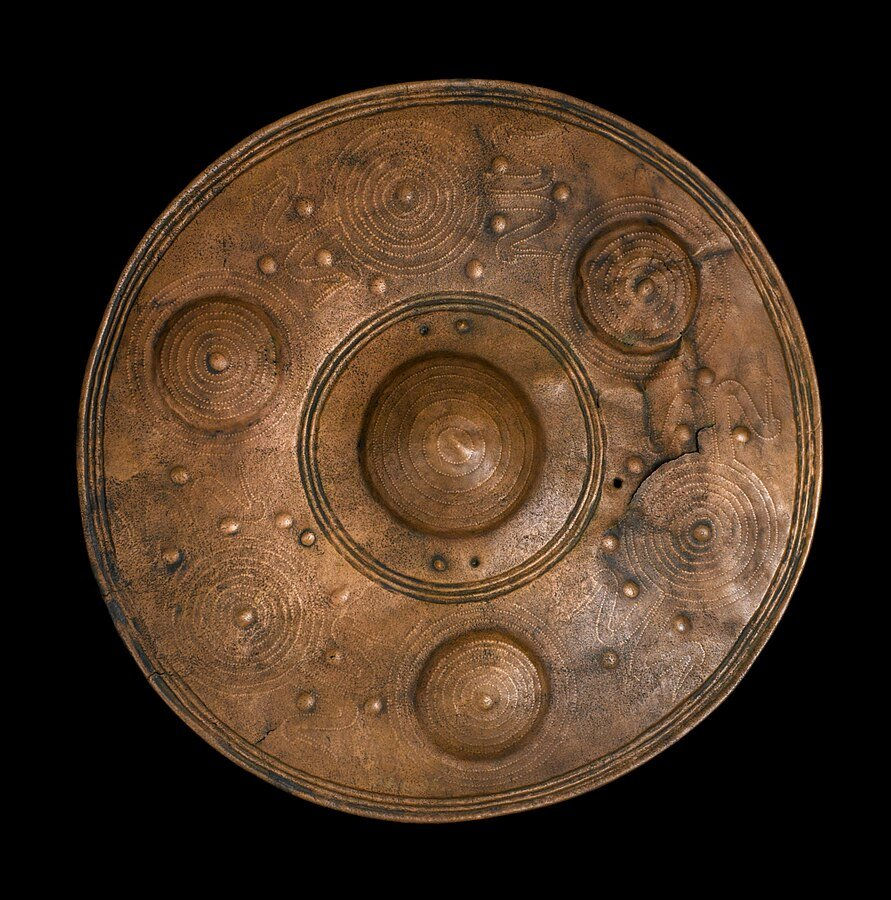Ox Hide Ingots - Bronze Age Trade
- Sylvia Rose

- May 8, 2024
- 4 min read
Oxhide (ox hide, ox-hide) ingots are popular trade goods during the Bonze Age. An ingot is a piece of metal or other material such as glass, cast into a shape of certain size or weight. Oxhide ingots are traditionally copper, a primary component of bronze.
READ: Cult of the Fire God - Bronze Age Quest Adventure
See also:

Oxhide ingots weigh 20-30 kg (44-66 lb) each. The shape resembles the stretched hide of an ox with a protruding handle at each of the ingot’s four corners. At first archaeologists assume each ingot is equivalent to the value of one ox.
READ: Cult of the Fire God - Bronze Age Quest Adventure
Oxen come in different sizes, from 450 - 1180 kg (1000 - 2600 lb). When yoking oxen for work it's important to use animals of similar size. Otherwise, as both ingots and oxen sizes vary, archaeologists soon assert the shape is a coincidence.

Speculations arise. "The ingots' producers probably designed these protrusions (corner extensions) to make the ingots easily transportable overland on the backs of pack animals." - Pulak, Cemal (2000).
READ: Cult of the Fire God - Bronze Age Quest Adventure
Pack animals include donkeys, dogs, goats, mules, horses, yak, reindeer, elephants, oxen, llamas and camels. Egyptian art shows workers carrying oxhide ingots. Complete or partial ingots are found in Sardinia, Crete, Peloponnese, Cyprus and Sicily.

Copper forms a protective patina of blue green verdigris when exposed to air, as in the ingot above. From c. 5h century CE verdigris pigment production is big business throughout the Middle Ages.
READ: Lora Ley Fantasy Fiction - German Mythology Adventures
Typically the ingot is nearly pure copper. Re-used copper may contain traces of slag. Use of ingots also contributes to higher rates of production. Some ingots bear stamps. Various metallurgists may have their own styles and mark the finished product as proof of quality.

Bronze recipes can vary. Usually bronze is 88% copper and 12% tin. More ornamental items might use 90% copper and 10% tin. The more tin the harder the bronze. Arsenic is sometimes used for an even harder bronze, as in weapons, and if tin supplies are short.
READ: Cult of the Fire God - Bronze Age Quest Adventure
Copper ingots are also discovered in Turkey including at Boğazköy (Hattusa), as well as in Egypt and Sozopol in Bulgaria. Marine archaeologists recover many ox hide ingots from two shipwrecks off the coast of Turkey (Uluburun and a later wreck off Cape Gelidonya at Lycia).

In Egypt, ox-hide ingots are popular during the New Kingdom (after c. 1570 BCE). Building escalates. Tombs and temples show depictions of the “Asiatic copper”.
READ: Lora Ley Fantasy Fiction - German Mythology Adventures
In ancient Greece, many copper ingots weigh around 29-30 kg (64-66 lb). In this case it's suggested by scholars one oxhide ingot is equivalent to the Attic Greek talent weight unit at 26 kg (57 lb). According to Attic Greeks, a talent is equal to nine man-years of skilled work.

Ancient Egyptians identify copper supply in three regions: Syria, Crete and, based on lead content, mostly central Cyprus. Egyptians are also mining copper from Sinai by the third millenium BCE. They prefer arsenic to tin due to the superior weaponry it produces.
READ: Reiker For Hire - Victorian Detective Murder Mysteries
For seafaring merchants, ox-hide ingots are most desirable because they stack, taking up less room on a ship. A pack animal such as donkey or mule carries 20% of its body weight, which is not a lot of oxhide ingots.

Large Bactrian camels can carry more than 200 kg (440 lb) for 50 km (31 mi) in a day. A dromedary camel carries up to 100 kg (c. 220 lb) for 60 km (37 mile) in the cool of night.
READ: Cult of the Fire God - Bronze Age Quest Adventure
In the ancient world, use of ingots encourages standardization in size and dimensions of common items, including shields and weaponry, tools, and ornamentation such as gold bracelets or lock rings. Made with standard metal content they're also a type of currency.
See also:
Metal or later glass ingots are popular items on trade routes. Precious metal ingots such as gold and the preferred currency metal, silver, can be used as money. Most merchants carry their own set of scales or measuring tools.
READ: Lora Ley Fantasy Fiction - German Mythology Adventures
Before widespread use of coinage in the 1st millennium BCE, armbands, bracelets and lock rings are used as a type of standardized currency. The first coin in the world is the Lydian lion. It's minted by the kingdom of Lydia, in modern-day Turkey c. 700 BCE.

READ: Reiker For Hire - Victorian Detective Murder Mysteries
The Lydian lion and other Lydian coins are made of electrum, a natural alloy of gold and silver found in abundance in the region. Electrum is in use as early as the third millennium BC in the Old Kingdom of Egypt.



